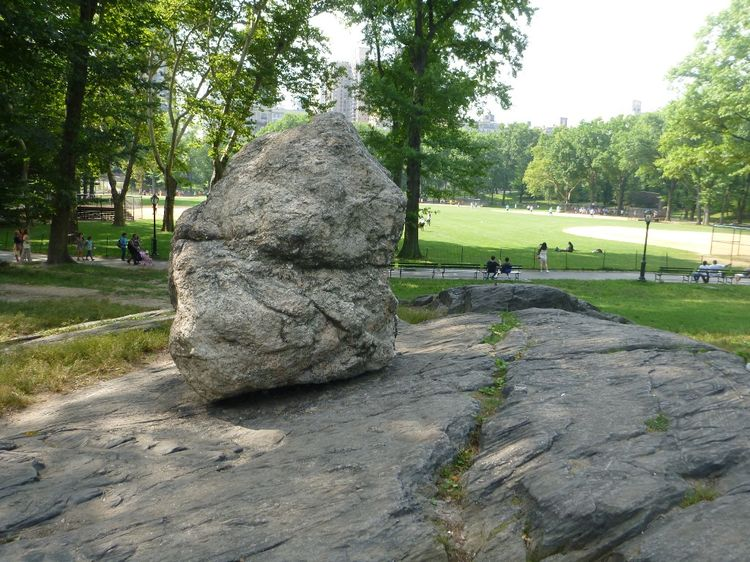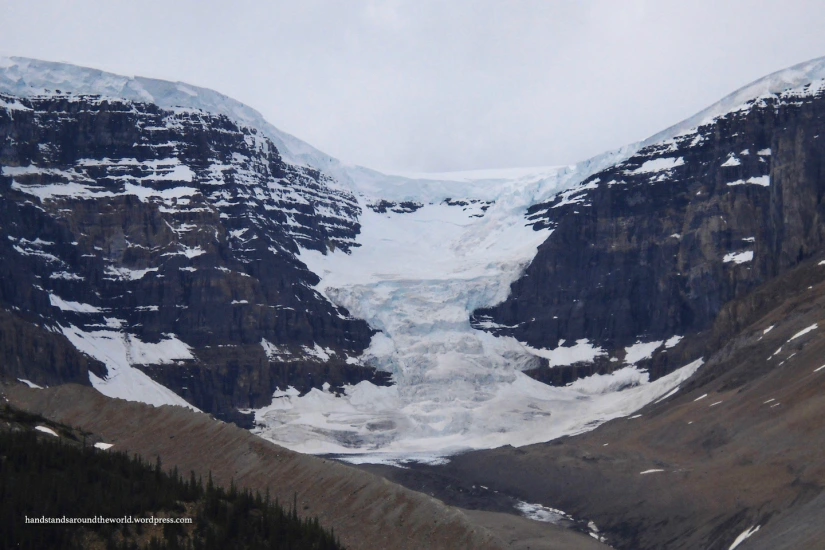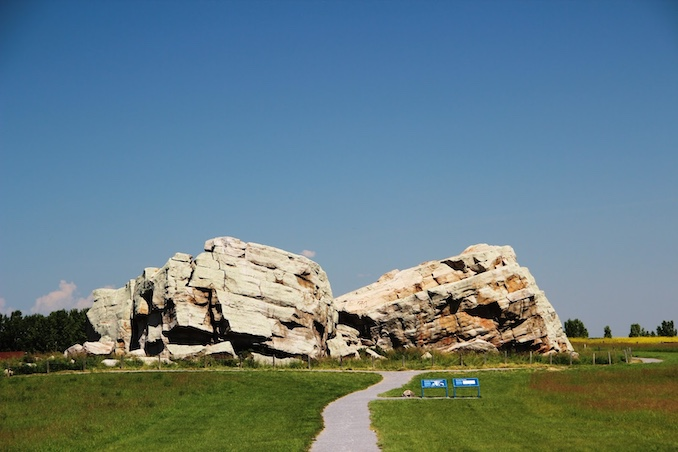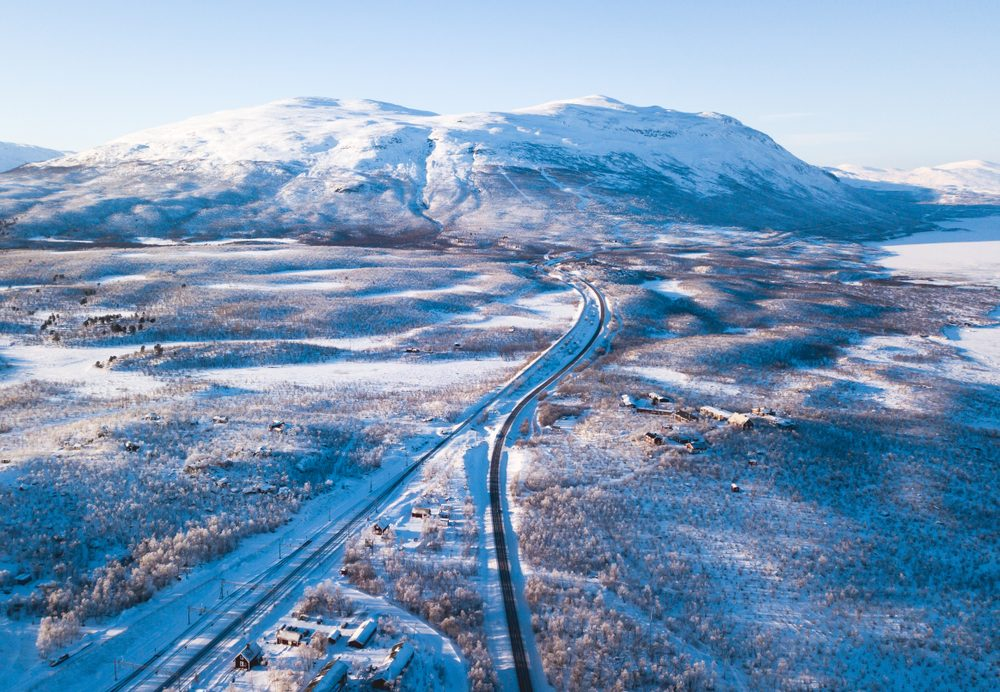Striations, also known as glacial striations, are long, narrow, and parallel grooves or scratches found on rock surfaces. These fascinating geological features are created by the movement of glaciers, which are massive bodies of ice that slowly move across the landscape, carrying with them rocks, boulders, and other debris. As the glacier moves, the rocks and debris embedded in its base scrape against the underlying bedrock, leaving behind distinctive linear marks.
Glacial striations are not only visually striking but also provide valuable insights into the direction and extent of past glacial activity. By studying these features, geologists can reconstruct the history of glacial movements and gain a better understanding of Earth’s climate during the ice ages. In this article, we will explore some of the largest and most impressive striations found around the world, showcasing the incredible power and beauty of glacial erosion.
Kelleys Island Glacial Grooves, Ohio, USA

Located in Lake Erie, Kelleys Island is home to one of the most remarkable examples of glacial striations in the world. The Kelleys Island Glacial Grooves are a series of deep, parallel grooves carved into the limestone bedrock by the movement of the Laurentide Ice Sheet during the last ice age, approximately 18,000 years ago. These grooves are up to 15 feet deep, 35 feet wide, and extend for over 400 feet, making them the largest accessible glacial grooves in the world.
The Kelleys Island Glacial Grooves provide a unique opportunity for visitors to witness the power of glacial erosion firsthand. The site has been designated as a National Natural Landmark and is protected by the Ohio Department of Natural Resources, ensuring that future generations can continue to marvel at this incredible geological wonder.
Glacial Grooves at Glacier National Park, Montana, USA

Glacier National Park, located in the Rocky Mountains of Montana, is renowned for its stunning alpine landscapes and diverse ecosystems. The park is also home to a number of impressive glacial striations, which can be found throughout the region. One of the most notable examples is the set of glacial grooves near the Grinnell Glacier Trail.
These striations were formed by the movement of the Grinnell Glacier, which once covered a much larger area of the park. As the glacier receded, it left behind deep, parallel grooves in the exposed bedrock, some of which are several feet wide and extend for hundreds of feet. The grooves are particularly striking when viewed from above, as they create a mesmerizing pattern across the landscape.
Roche Moutonnée at Central Park, New York City, USA

In the heart of New York City’s Central Park lies a surprising geological feature: a roche moutonnée. This French term, which translates to “sheepback rock,” refers to a distinctive landform created by glacial erosion. The Central Park roche moutonnée is a large, smooth, and rounded outcrop of schist bedrock that was shaped by the movement of the Laurentide Ice Sheet during the last ice age.
The roche moutonnée is characterized by its asymmetrical shape, with a gently sloping upstream side and a steep, jagged downstream side. This unique form is the result of the glacier’s differential erosion, as the ice sheet abraded and polished the upstream side while plucking and fracturing the downstream side. The Central Park roche moutonnée is a rare example of glacial erosion in an urban setting, offering visitors a glimpse into the city’s ancient geological past.
Glacial Striations at Jasper National Park, Alberta, Canada

Jasper National Park, situated in the Canadian Rockies, is a UNESCO World Heritage Site known for its rugged mountains, pristine lakes, and diverse wildlife. The park also boasts an array of glacial features, including impressive striations that offer insights into the region’s glacial history.
One of the most accessible and well-preserved examples of glacial striations in Jasper National Park can be found near the Athabasca Glacier, along the Icefields Parkway. Here, visitors can observe long, parallel grooves etched into the exposed bedrock, some of which are several inches deep and extend for many yards. These striations were formed by the movement of the Athabasca Glacier during the last ice age, as rocks and debris embedded in the base of the glacier scraped against the underlying rock.
Okotoks Erratic and Striations, Alberta, Canada

The Okotoks Erratic is a massive boulder located near the town of Okotoks, Alberta, Canada. This impressive glacial erratic, which measures approximately 9 meters high, 41 meters long, and 18 meters wide, is one of the largest known erratics in the world. The boulder is composed of quartzite, a type of metamorphic rock that is not native to the area, indicating that it was transported to its current location by glacial activity.
In addition to the erratic itself, the site also features well-preserved glacial striations on the surrounding bedrock. These parallel grooves, which were created by the same glacial movement that deposited the erratic, provide further evidence of the region’s glacial history. The Okotoks Erratic and its associated striations offer a fascinating glimpse into the power and scale of glacial erosion and transport.
Glacial Striations at Isle Royale National Park, Michigan, USA

Isle Royale National Park, located in Lake Superior, is a remote and rugged wilderness known for its pristine forests, clear waters, and diverse wildlife. The park is also home to some of the most impressive glacial striations in the Great Lakes region, which offer a testament to the area’s glacial past.
One of the best places to observe these striations is along the Greenstone Ridge Trail, which runs the length of the island. Here, hikers can find numerous exposures of bedrock that have been scoured and scratched by the movement of glaciers during the last ice age. The striations are particularly striking in areas where the bedrock is composed of harder, more resistant rock types, such as basalt and diabase.
Glacial Striations at Kosciuszko National Park, New South Wales, Australia

While Australia is not typically associated with glacial activity, the Kosciuszko National Park in New South Wales is home to some of the most extensive glacial striations in the Southern Hemisphere. These striations were formed during the last ice age, when the Snowy Mountains were covered by a series of small glaciers.
The best place to observe these glacial striations is at the Blue Lake, a stunning alpine lake located near the summit of Mount Kosciuszko, Australia’s highest peak. Here, visitors can find exposed bedrock along the shoreline that has been deeply scratched and grooved by the movement of glaciers. The striations at Blue Lake provide a rare glimpse into Australia’s glacial history and offer a unique opportunity to study glacial erosion in a non-polar setting.
Glacial Striations at Torres del Paine National Park, Chile

Torres del Paine National Park, located in the Patagonian region of southern Chile, is renowned for its stunning mountain landscapes, turquoise lakes, and diverse wildlife. The park is also home to some of the most impressive glacial striations in South America, which offer insights into the region’s glacial history.
One of the best places to observe these striations is at the base of the Paine Massif, a group of granite peaks that form the centerpiece of the park. Here, visitors can find extensive exposures of bedrock that have been scoured and scratched by the movement of glaciers during the last ice age. The striations are particularly striking when viewed in contrast with the towering peaks and pristine glacial lakes that surround them.
Glacial Striations at Yosemite National Park, California, USA

Yosemite National Park, located in the Sierra Nevada mountains of California, is famous for its iconic granite cliffs, waterfalls, and alpine meadows. The park is also home to a number of impressive glacial features, including well-preserved striations that offer a glimpse into the region’s glacial past.
One of the best places to observe these striations is at Olmsted Point, a scenic overlook along the Tioga Road. Here, visitors can find expansive exposures of granite bedrock that have been deeply scratched and grooved by the movement of glaciers during the last ice age. The striations at Olmsted Point are particularly striking when viewed in the context of the park’s dramatic landscape, which has been shaped by millions of years of glacial erosion.
Glacial Striations at Glacier Bay National Park, Alaska, USA

Glacier Bay National Park, located in southeastern Alaska, is a vast wilderness known for its tidewater glaciers, pristine fjords, and diverse marine ecosystems. The park is also home to some of the most extensive and well-preserved glacial striations in North America, which offer a testament to the region’s dynamic glacial history.
One of the best places to observe these striations is at the base of the Margerie Glacier, a massive tidewater glacier that flows into Glacier Bay. Here, visitors can find extensive exposures of bedrock that have been scoured and scratched by the movement of the glacier, creating a mesmerizing pattern of parallel grooves and ridges. The striations at Margerie Glacier provide a stunning example of the power and beauty of glacial erosion in action.
Glacial Striations at Jökulsárgljúfur National Park, Iceland

Iceland is a country known for its diverse and dynamic geological features, including active volcanoes, geothermal springs, and vast glaciers. The Jökulsárgljúfur National Park, located in the northeastern part of the country, is home to some of the most impressive glacial striations in Iceland, which offer a glimpse into the island’s complex glacial history.
One of the best places to observe these striations is at the Ásbyrgi canyon, a horseshoe-shaped depression that was carved out by glacial meltwater during the last ice age. The walls of the canyon are composed of basaltic rock that has been deeply scratched and grooved by the movement of glaciers, creating a striking pattern of parallel lines and ridges. The striations at Ásbyrgi canyon provide a fascinating example of the interplay between glacial erosion and volcanic activity in shaping Iceland’s unique landscape.
Glacial Striations at Abisko National Park, Sweden

Abisko National Park, located in the far northern reaches of Sweden, is a pristine wilderness known for its stunning arctic landscapes, midnight sun, and northern lights. The park is also home to some of the most impressive glacial striations in Scandinavia, which offer insights into the region’s glacial history.
One of the best places to observe these striations is at the Abisko Canyon, a deep gorge that was carved out by glacial meltwater during the last ice age. The walls of the canyon are composed of hard, metamorphic rock that has been scoured and scratched by the movement of glaciers, creating a striking pattern of parallel grooves and ridges. The striations at Abisko Canyon provide a testament to the power and persistence of glacial erosion in shaping the landscapes of the Arctic.
Conclusion
Glacial striations are a fascinating and visually striking reminder of the immense power and scale of glacial erosion. These parallel grooves and scratches, etched into bedrock by the movement of glaciers during the ice ages, offer valuable insights into Earth’s climatic and geological history. From the vast wilderness of Alaska to the remote reaches of Scandinavia, the world’s largest striations showcase the beauty and diversity of glacial landscapes.
By studying these features, geologists and glaciologists can reconstruct the direction and extent of past glacial activity, providing a better understanding of how glaciers have shaped the Earth’s surface over millions of years. Moreover, glacial striations serve as a poignant reminder of the ongoing impacts of climate change, as many of the world’s glaciers continue to recede at an alarming rate.
As we marvel at the size and scale of these incredible geological features, we are reminded of the delicate balance between the Earth’s climate, its landscapes, and the forces that shape them. By protecting and preserving these sites for future generations, we ensure that the story of Earth’s glacial past continues to inspire and inform us as we navigate the challenges of a changing climate.

